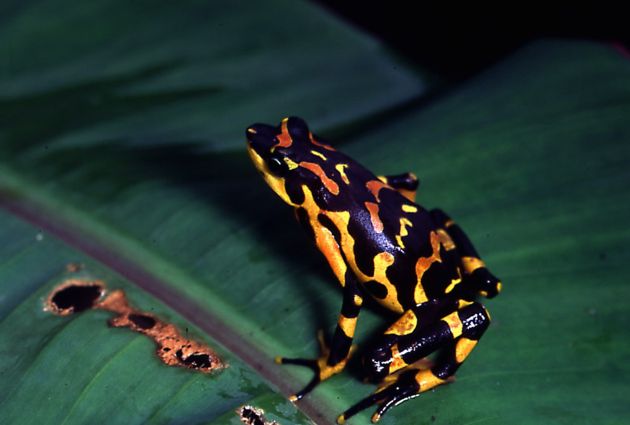Domino Effect of 'Co-extinction' Pinned Down

Today's endangered species lists hide thousands of plants and animals that will also become extinct if their host species disappear, new research shows.
The extinction of one plant or animal serves as a domino effect causing the disappearance of multiple organisms that depend up it, according to a paper published in the journal Science.
"Other papers have brought up the specter of co-extinction before, but ours is the first to quantify the probable extent of it," said Heather C. Proctor of the University of Alberta.
She and a research team led by Lian Pin Koh of the National University of Singapore and Robert Dunn from the University of Tennessee, calculated the expected levels of co-extinction across a diverse selection of plants and animals.
The team first compiled a list of 12,200 plants and animals currently listed as threatened or endangered by the International Union for Conservation of Nature and Natural Resources. They then looked at a selection of insects, mites, fungi and other organisms that are uniquely adapted to the threatened host. Through personal experience and examining past research, the researchers found that at least 200 of these adapted species, or affiliates, have already been lost through co-extinction and that another 6,300 should be classified as "co-endangered."
There are probably numerous other affiliates that are extinct but are unknown as yet, Proctor said.
" For example, we know that six species of mites went extinct along with the Carolina parakeet only because some colleagues of mine happened to examine a stuffed parakeet in a museum, and found the mites still attached," Proctor said.
Sign up for the Live Science daily newsletter now
Get the world’s most fascinating discoveries delivered straight to your inbox.
"For most other extinctions, we either have not examined the museum specimens, or such specimens do not exist, e.g., for the dodo."
The implication of the paper is that scientists should multiply the number of species expected to go extinct by a minimum of 1.5 in order to account for small, typically ignored affiliate species, Proctor said.
These overlooked species are often insects, spiders, and other invertebrate animals considered less charismatic by the public.
"Many herald the success of conservation efforts to save the California condor from extinction, but who mourns the condor louse that went extinct as a result of efforts by well-meaning conservation biologists to rid the birds of their parasites?" said Vincent Smith, a lice expert who was part of the research team.
In other cases, a less charismatic organism's extinction can result in the loss of a species typically admired by the public. For instance, a host plant vine that became locally extinct in Singapore took along with it a species of butterfly, Parantica aspasia, that was dependent upon the vine for survival.
Co-extinction affects not just parasites and their hosts, but also predators and their prey and herbivores and their host plants.
Up to 50 percent of species are predicted to be lost worldwide in the next 50 years, according to one recently published story. There have been five major extinction events in the history of life on Earth. Some scientists say that a "sixth extinction" event is under way as a result of pollution and habitat loss, largely driven by humans.
"Sounds likely to me," Proctor said of that assessment.
Robin Lloyd was a senior editor at Space.com and Live Science from 2007 to 2009. She holds a B.A. degree in sociology from Smith College and a Ph.D. and M.A. degree in sociology from the University of California at Santa Barbara. She is currently a freelance science writer based in New York City and a contributing editor at Scientific American, as well as an adjunct professor at New York University's Science, Health and Environmental Reporting Program.










